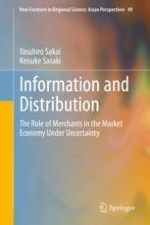2021 | OriginalPaper | Chapter
8. Risk Aversion and Information Exchange: The Constant Absolute Risk Aversion Function and its Applications
Authors : Yasuhiro Sakai, Keisuke Sasaki
Published in: Information and Distribution
Publisher: Springer Singapore
Activate our intelligent search to find suitable subject content or patents.
Select sections of text to find matching patents with Artificial Intelligence. powered by
Select sections of text to find additional relevant content using AI-assisted search. powered by
